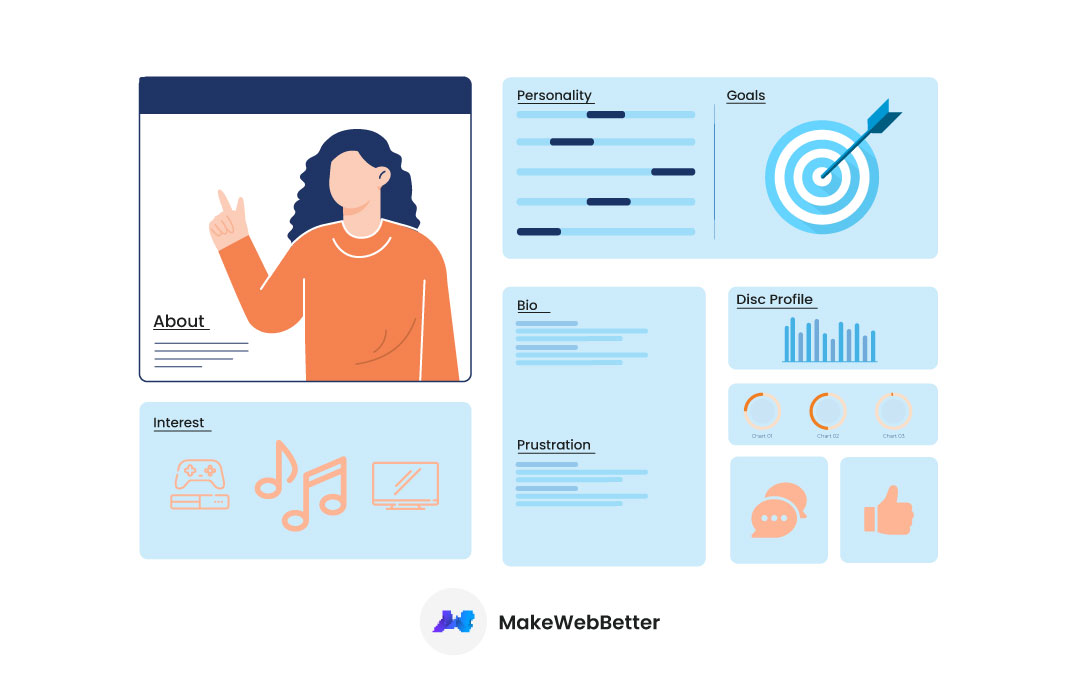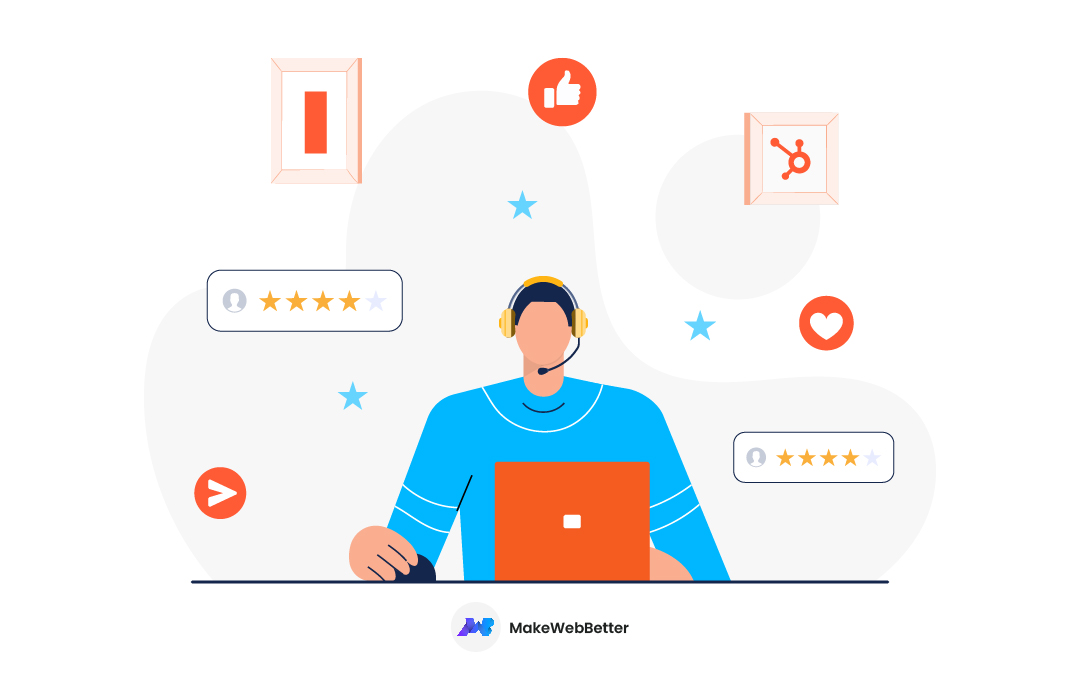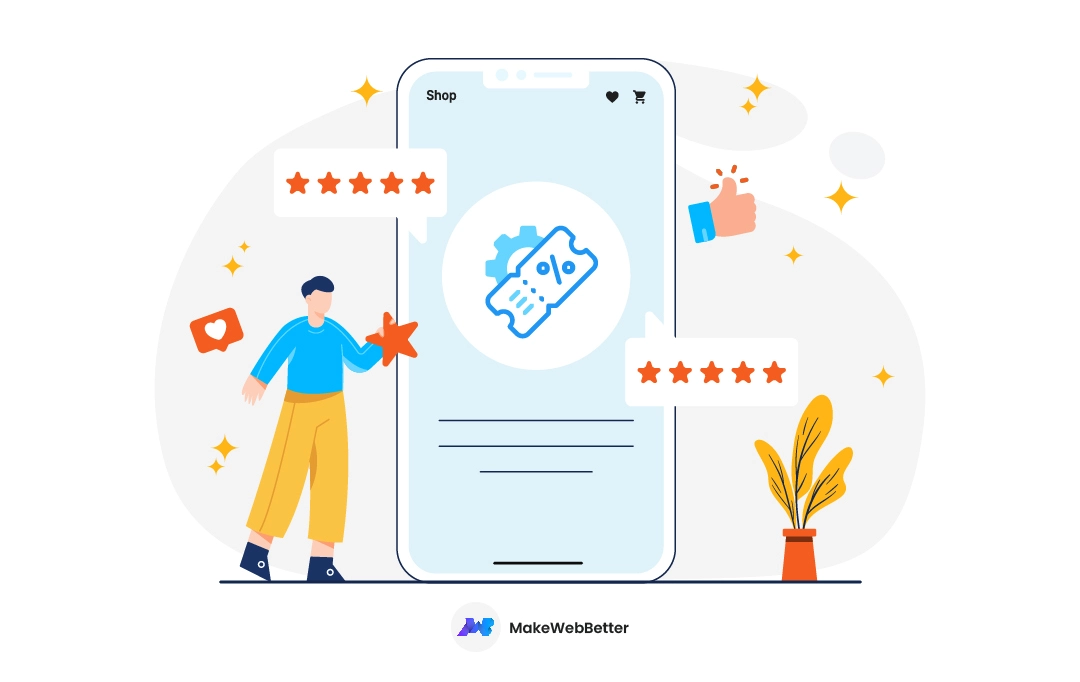Creating an inbound marketing persona leads you to better targeting, satisfied customers, engaging content, and more.
But what exactly is an inbound marketing persona? How do you create it? And what are its benefits?
These are the things we’ll learn in this post.
So let’s begin quickly.
What You’ll Learn In This Post
What Is Inbound Marketing Persona?
An inbound marketing persona or simply buyer persona is a depiction that answers every relevant question about your ideal customers.
For example, a buyer persona would contain details like the age, interests, occupation, education, buying behavior, etc. about your potential buyer.
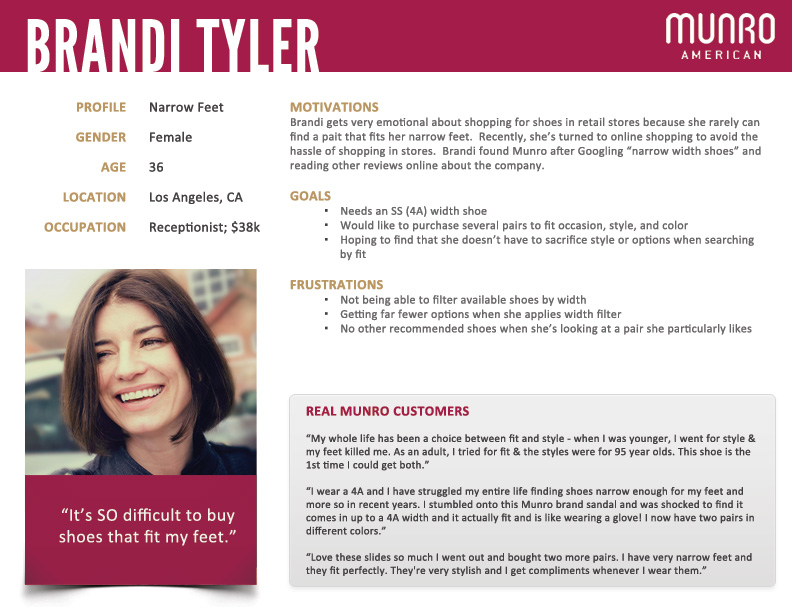
Credit: Alexa.com
These details will make it more clear for you to understand what kind of audience you should target. Or what audience would purchase your solutions?
Creating a persona should be the initial step in your inbound marketing strategy.
Without defining an inbound marketing buyer persona, you’d be shooting in the dark hoping to hit the target by luck.
This shows the importance of having a persona for your inbound marketing campaigns. Let’s dive deep into it to understand the role of a buyer persona.
Role of Inbound Marketing Persona in Your Business
Creating a persona for your inbound marketing campaign would help you:
-
Better Customer Targeting
Think you’re a brand that deals in baby products like baby food, toys, clothing, and other stuff.
In this case, the ideal audience for you would be parents with children up to the age of six.
Now if you’re going to run a discount sale on baby food, you’ll have to target the right group of people. To be precise, the perfect audience for you would be parents between 30-40.
And creating a buyer persona would make this targeting easy for you.
But, if you don’t have an ideal buyer persona, you wouldn’t have a clear idea about your target market. And if you target people below 26 or above 40, you’d more likely waste your effort.
-
Produce Intent-satisfying Content
Long gone are the days when stuffing content with keywords used to rank up your content.
Today, if you want to rank on top of SERPs, satisfying intent should be your top priority.
Intent or User intent is the purpose of the user behind searching any content.
There are 4 major types of search intents:
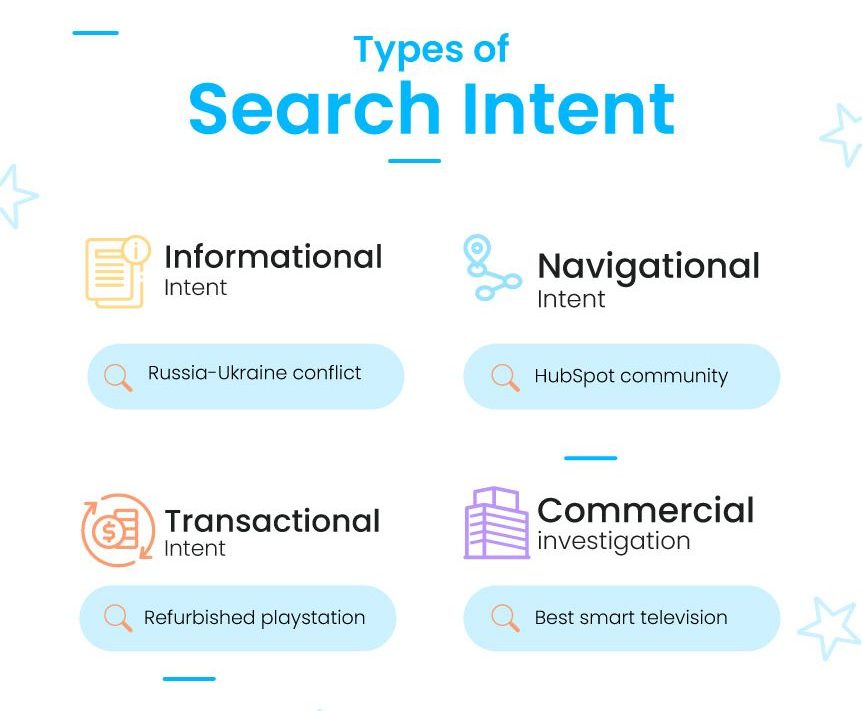
- Informational: What is the Russia-Ukraine conflict?
- Navigational: HubSpot community
- Transactional: Refurbished playstation
- Commercial investigation: Best smart television
Creating an inbound marketing buyer persona beforehand would help you understand what type of content your audience would be interested in. So you can create content that satisfies the user intent.
-
Win Users’ Trust with Ease
For any brand in the world, winning users’ trust is an uphill battle.
81% of consumers consider trust as a deciding factor when it comes to purchase.

If there’s a secret sauce to win hearts and trust of the users, it is, “give them what they need”.
And how can you do it?
By creating a buyer persona.
As I told you, having a buyer persona improves targeting and helps you create intent-satisfying content.
Both of these things help you personalize marketing. And when you personalize their experience, they’re more likely to trust you.
-
Meet Campaign Goals Efficiently
Any campaign that doesn’t achieve its goals is a waste.
And you don’t want to put effort in such campaigns.
So, to ensure your campaigns deliver, you have to know the right audience for those campaigns. And creating inbound marketing buyer persona helps you there.
Let’s say you create HubSpot themes and have recently launched a Free HubSpot theme and want to promote it.
In this case, the ideal audience for you would be small and medium-sized businesses and HubSpot’s CMS Hub starter users.
If you target enterprise businesses with a free theme, you’ll waste your efforts as your free theme will have limited features that may not fulfill their requirements.
But if you target small businesses, you’re more likely to receive a positive response and installations.
This proves how critical creating a buyer persona is.
Steps to Create a Perfect Inbound Marketing Persona
Let’s talk about the steps to create such personas:
1. Understand the Problem You Solve
Buyer persona helps you picture the audience who’s affected by the problems you solve.
Hence, to start creating your buyer persona, you first need to be clear about the problem you solve.
Take an example of WordPress, the problem it addresses is “expensive website creation”. And it helps users create their own website almost for free.
Just like this example, you first need to understand the problems you solve. Without understanding the problem, you cannot find the right audience who needs your solution.
2. Determine the People Affected by the Issue
Once you understand the problem you solve, start finding out the people affected by that problem.
For this, you can embrace multiple tactics like:
- Analyze your existing audience
- Ask your sales team about the customers they deal with
- Talk to the customers with similar interests on social media
- Analyze your competitor’s audience
- Ask questions to users using social media polls
Once you use all these tactics, you’ll be left with a rough buyer persona.
And you need to add some finishing touches to complete it.
3. Ask Yourself Questions about Your Ideal Customers
To build a complete and strong buyer persona, you need to ask yourself some questions.
These questions will determine that the users you’d be targeting are appropriate users and more likely to convert.
So to finalize your persona, ask yourself questions like:
- What are their demographics?
Like their age, gender, education, location, marital status, etc.
- What do they do?
Like their job, company, company size.
- Which social media platforms are they active on?
LinkedIn, Twitter, Instagram, or any other.
- What products do they use?
Your or your competitor’s products or anything else.
- What platforms influence their shopping decisions?
eCommerce, Social media, websites.
Brainstorm on these questions to find out the answers. If the answers are a perfect fit, then you’ve successfully developed your buyer persona.
And now, it’s time to build it using a tool.
4. Create Your Persona
After you’re ready with your set of answers, you can use any buyer persona generator tool or template to create your persona.
There are many buyer persona generators you can use to design your persona. But here are the best and most useful ones:
- HubSpot’s Make My Persona
- Xtensio
- Semrush(template)
Use any of these buyer persona generator tools or templates and fill in all the details you gathered so far to create your persona.
And there you have it. You’ve successfully created your inbound marketing persona. You can start addressing and targeting these types of audience to get maximum results through your campaigns.
Mistakes to Avoid While Creating Buyer Persona
Creating a buyer persona is something that brands usually don’t do. Hence, when they create it, they commit some mistakes.
Let’s take a look at those mistakes so you can avoid them while creating your buyer persona.
-
Asking Wrong Questions
The most common mistake people make when creating a persona is asking wrong questions.
The questions work as a base for your persona. And if the base is not strong enough, you cannot build a strong persona.
Thus, the most important thing while building inbound marketing buyer personas is to ask relevant questions.
-
Assuming, Not Analyzing
Creating a perfect buyer persona is like finding your way through a dense forest. One wrong decision and you’ll be lost.
And if you’re not good with directions like me, you better not go with those random assumptions.
So analyze things meticulously to ensure what you have isn’t assumption-driven but research-backed.
-
Not Talking to the Users
You can create a good persona on your own and a great persona with the help of real customers.
Interviewing real customers can be a hectic decision since you need to reach out to hundreds of users and very few of them would reply.
But to get hold of your customers’ needs, you have to do what’s necessary.
So, to find out the ideal audience, ping them on social media platforms like LinkedIn to understand what they need.
You can also join communities and groups to get opinions from experts.
-
Not Analyzing Your Competitors
Your competitor can play a vital role in your buyer persona creation process.
But because of that psychological rivalry, businesses usually don’t examine their competitors.
You should also avoid this mistake and spy on your competitors to understand the audience they’re attracting.
-
Blindly Targeting the Created Persona
Honestly speaking, there are many chances that the persona you come up with isn’t a perfect fit for your business.
And if this is the case, targeting it blindly would give you no results.
So if it doesn’t turn out to be fruitful after a specific timespan, re-analyze and improve it.
Some Buyer Persona Examples
Just to give you a better idea of what a complete buyer persona looks like, I’m presenting some buyer persona examples of them.
Thunderfoot created a post where they compiled a list of different buyer personas. I’m using those personas here so Shoutout to Thunderfoot!!!
1. Frank
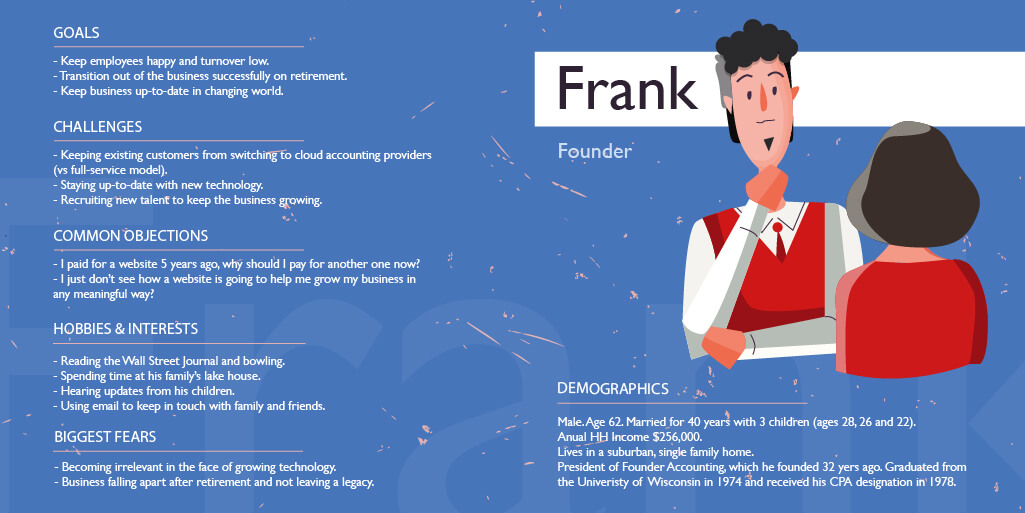
2. Mark
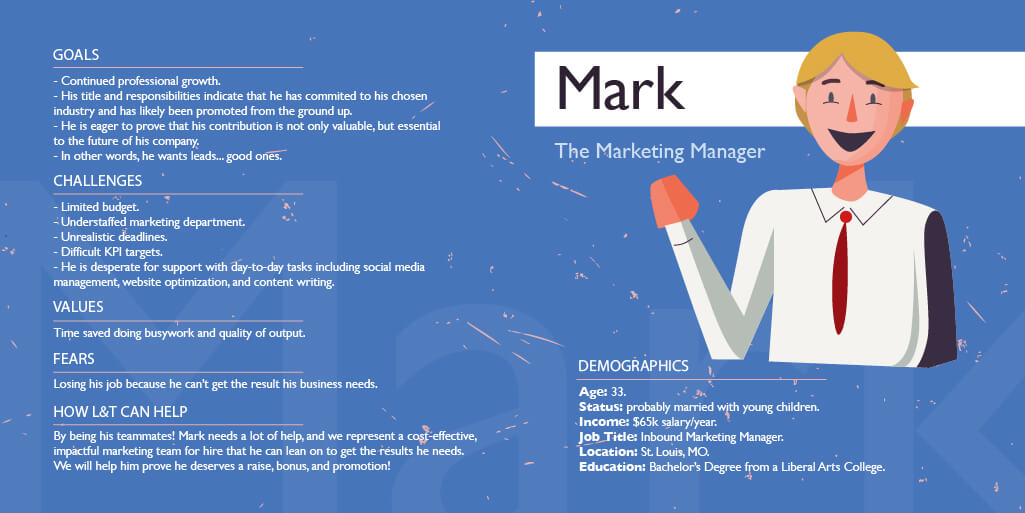
3. Ms. Snow
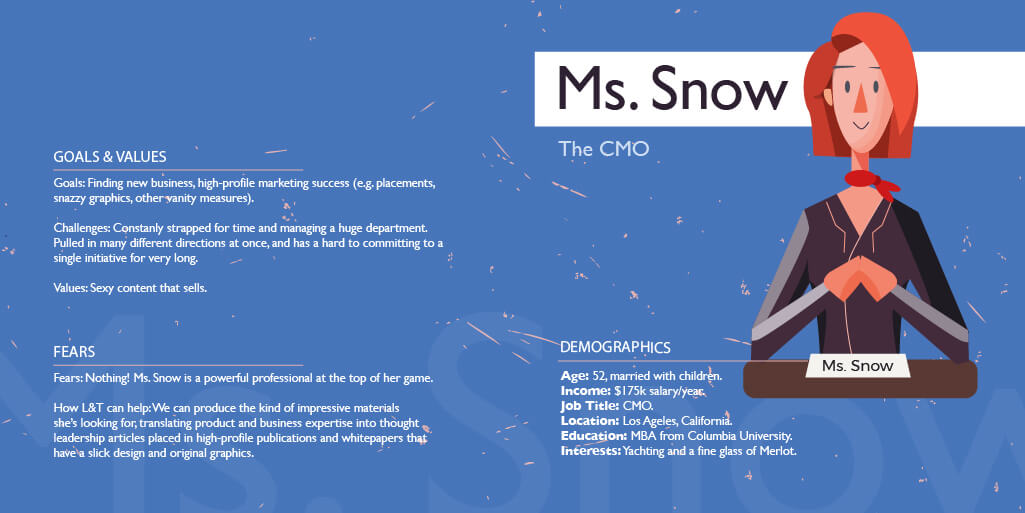
Those were some buyer persona examples.
When you create your personas, they may look different than these examples and that’s completely fine.
FAQs About Buyer Personas
Let’s have a look at some common questions people ask about buyer personas:
1. What Should a Buyer Persona Include?
Different sorts of buyer personas can contain different information.
But some basic information every buyer persona must include is basic demographic information like Name, Age, Gender, Location. Apart from these, it should also contain Pain points, Goals, Interests, and Behavioral traits.
2. Does My Business Need Multiple Buyer Personas?
Yes. If you offer different sorts of solutions that completely differ from each other, you can create multiple personas.
But remember, you don’t need to create different personas each time for a different campaign. Create a different buyer persona when you want to target a whole new audience.
3. What Businesses Need a Buyer Persona?
Every business needs a buyer persona. However, many businesses don’t have it in a tangible form but you should commit that mistake. Whatever your business is, do create a buyer persona to know your target audience.
4. Is It Necessary to Create a Buyer Persona?
It’s not necessary to create a buyer persona. But if you do create it, you’ll have an upper hand since you’ll be more clear about your target audience.
5. Can I Create a Buyer Persona Without Research?
Of course. You can create a buyer persona without any research. But that persona wouldn’t be as reliable as a well-researched one.
And if you create a persona with no research, it’d be based on assumptions. And I’ve already told you, a buyer persona should be research-backed not assumption-driven.
Bottom Line
So that was all about inbound marketing. To summarize the things, I’d say, creating a buyer persona would help you:
- Perform pin-point customer targeting
- Generate intent-fulfilling content
- Win your customers’ trust
- Better reach your goals
Now if you want to embrace these benefits, create a buyer persona. And if you need an expert-created buyer persona, connect with us.
Need a buyer persona for your business?
Let us know and we’ll create a perfect persona based on your business and goals.

